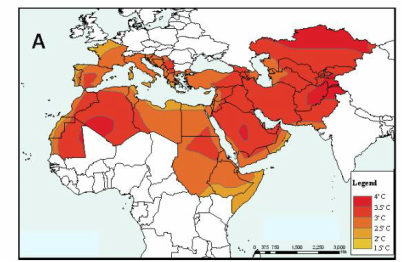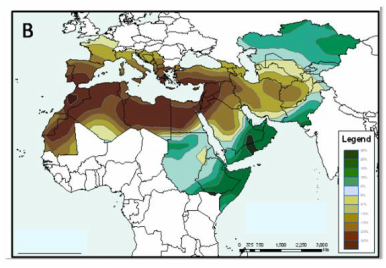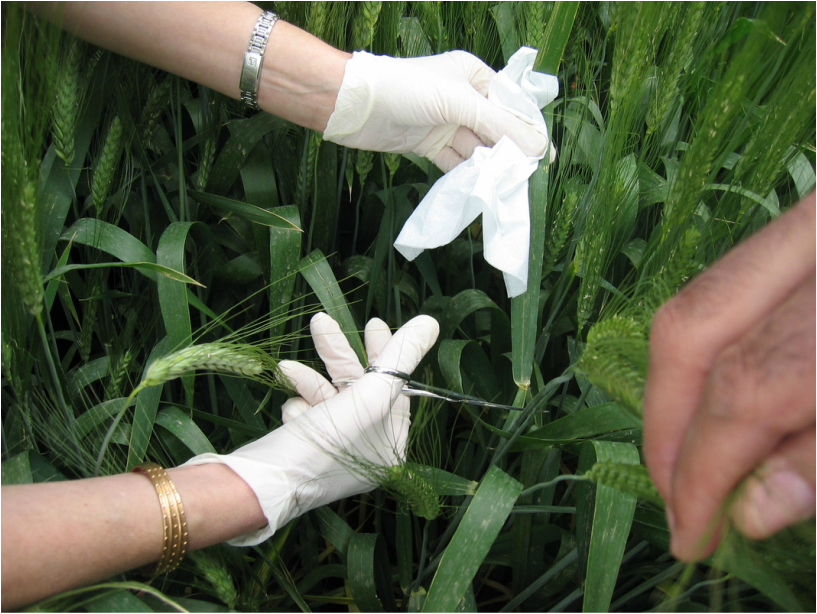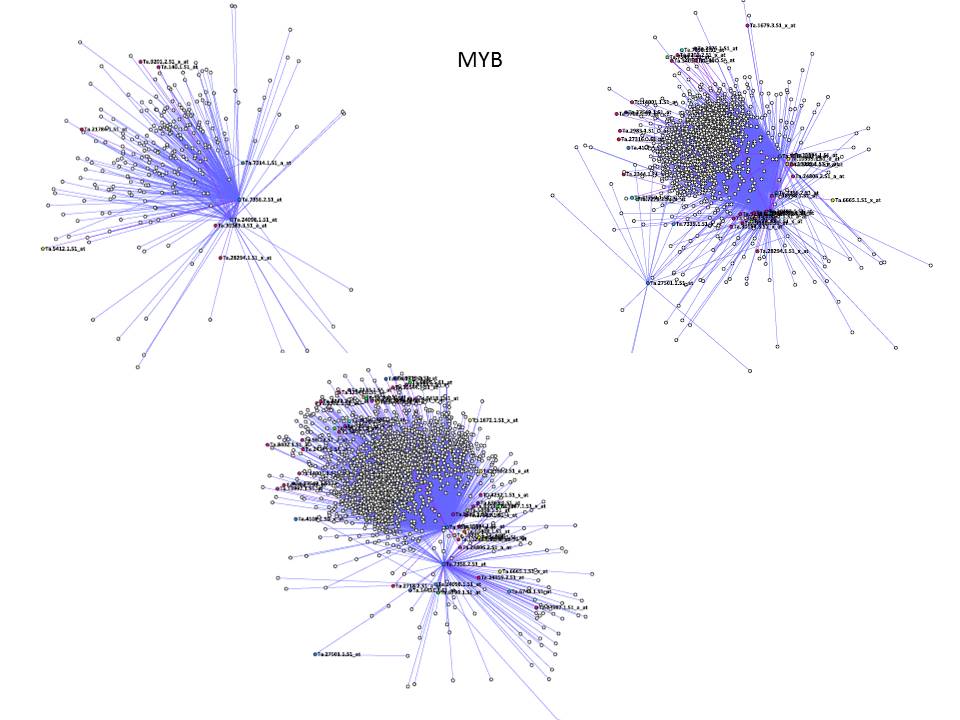Agriculture Crop Genetics
Genetic research to mitigate climate change threats
One solution to safeguard food production capacity and alleviate the impact of climate change is to maintain and even increase crop productivity. National and international efforts have prioritised the implementation and support of research programmes targeting crop science.
Research in plant science and agronomy is carried out at The International Centre for Agricultural Research in the Dry Areas (ICARDA) (http://www.icarda.org/). Here, scientists undertake a range of scientific disciplines and technologies to ensure the maintenance, breeding and selection of crop cultivars aimed at meeting farming demands under changing climate, especially for the dry areas. Wheat breeders have utilised the latest molecular marker technologies, genomics, quantitative genetics, classical genetics, crop physiology, trait studies and mathematical models to screen and develop durum wheat cultivars that are suited for the regional climate and that harbour resistance to abiotic and biotic stresses. Field sampling of wheat leaves (left) for the study of gene expression networks (right) in cultivars of varying drought resistance capacity. © Securewheat
Large projects integrating multiple partners and disciplines enable the study of advanced wheat germplasm and uncover fundamental mechanisms and system features enabling wheat to resist environmental stress such as drought (2). This knowledge feeds into the breeding programmes targeting the development of new strategies and wheat lines.
Scientists have also adopted a strategy of transferring resistance genes from landraces and wild relatives to durum advanced germplasm. This is coupled with the use of contrasting stress environments in the Mediterranean region using a double gradient selection strategy of screening promising varieties under optimal and sub-optimal environmental conditions; this allows the identification of promising lines for further cultivar development (3). Field trials of thousands of wheat cultivars in the ICARDA breeding programme. © Securewheat
Most importantly, this strategy has the added benefit of selecting for yield stable germplasm which has the potential for good yield under favourable seasonal conditions. This has given farmers the ability to maximise yield in good years, and thus to manage and balance reasonable yield over variable weather.
Over the past three decades, ICARDA has developed durum wheat cultivars with high tolerance to drought and Water Use Efficiency, such as Cham1, Cham3, Cham5, and Cham7. These cultivars were released in some areas and have contributed significantly to increase durum wheat production (3). Latest Update: Breeding wheat resilience- ICARDA References 1- Habash et al. 2009 Genomic approaches for designing durum wheat ready for climate change with a focus on drought. J. Exp. Bot. (2009) 60 (10): 2805-2815. doi: 10.1093/jxb/erp211 2- Habash et al. 2014 Systems responses to progressive water stress in durum wheat. PLoS One. 2014 Sep 29;9(9):e108431. doi: 10.1371/journal.pone.0108431. 3- Nachit et al. 2016 Gene Flow as a Source of Adaptation of Durum Wheat to Changing Conditions Including Climate Change. In Applied Mathematics and Omics to Assess Crop Genetic Resources for Climate Change Adaptive Traits. A Bari, AB Damania, M Mackay, S Dayanandan - 2016. Article Rights
Text: CC BY-NC-ND 4.0 |
2016
Dimah Habash |




